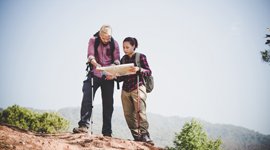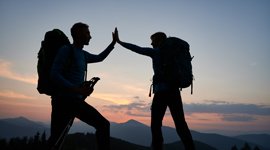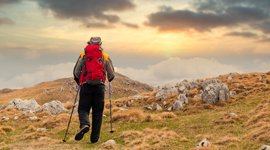
Beginner trekkers bring enthusiasm, curiosity, and confidence—but are they truly prepared? Not always. Preparing well for their treks is sometimes the least of their concerns. For trekkers sitting on their couch dreaming of their trek, these preparations do not matter. For YOU, the beginner trekkers with their bags packed, these aren't just slip-ups, but fatal mistakes. They are potential threats to your being when out on an adventurous trip.
Small mistakes can turn all the fun into a challenging ordeal quicker than you'd like. George Bernard Shaw once said, "Success does not consist in never making mistakes, but in never making the same one a second time." A second time, but why are we preaching them to you? Why not let experience and learn? Because, as your trekking partner, we (Trekking Compass) believe in sharing our mistakes. This will help you skip them and make those that are less fatal. When it comes to trekking, it's all about learning and being prepared.
Join us as we explore 5 common mistakes beginners face on their first trek, especially in the rugged treks of Uttarakhand. We will also cover how to avoid these mistakes on your exciting adventure to the Himalayan treks for beginners.
1:- Picking Tough Treks Instead of Easy Treks for Beginners
One common mistake beginners make is overestimating their abilities and jumping into difficult treks. They chose treks with higher difficulty levels like Roopkund and Pangarchulla Peak Trek. Their challenging terrains, steep climbs, and high altitudes are overwhelming for someone new to trekking.
You should instead try beginner-friendly trails like Nag Tibba or Chopta–Chandrashila Trek. These treks have shorter routes, are more forgiving, and offer spectacular views. A famous climber Yvon Chouinard said, "The adventure begins when things go wrong." But, why make them go wrong from the start?
Caution: The Dangers of Overambitious Treks
2:- Not Researching the Best Treks in India
Research and trekking go hand-in-hand or you'll be led to an unexpectedly tough trek. For example, the Har Ki Dun Trek may look pretty in pictures, but it has long trekking days. Its rough paths will surprise, more like scare a first-timer.
Research beforehand and you could land on treks like the Valley of Flowers. This trek is easy, stunning, and perfect for beginners. Knowing what you're getting into will help you have a trek suited to your level. As British explorer Ranulph Fiennes says, "Preparation is everything." Go without it and risk the most beautiful trek as it becomes haunting, very quickly.
Caution: The Risks of Ignorance
3:- Skipping Essential Gear
Some beginners think managing without the proper gear is possible. A pro trekker and our experts at Trekking Compass understand that skipping essentials is not cool. Essentials like trekking boots or warm layers, if missing on treks like Kedarkantha, can make the experience miserable. What will trekking in the snow without waterproof shoes be like? Cold and wet feet will surely ruin the adventure.
Similarly, on the Brahmatal Trek, forgetting a down jacket or thermal gloves means spending more time shivering. It means you cut back on the time to enjoy the mountain views. "There's no such thing as bad weather, only bad gear," said Swedish adventurer Thor Heyerdahl. Pack wisely!
Caution: The Perils of Poor Preparation
4:- Underestimating Fitness Levels
Trekking is far from a walk in the park, especially the treks at higher altitudes. A trek like the Kuari Pass may look straightforward but it's not. Long walks at high altitudes require solid endurance. Many beginners skip training and are out of breath after just a few hours.
On treks like Dodital, fitness becomes even more crucial because of its tougher ascent. The better your fitness, the more you'll enjoy the trek. As fitness coach Jack LaLanne once said, "Your body is your most priceless possession — take care of it." You will make the most out of the trek if you are well-trained!
Caution: The Consequences of Inadequate Fitness
5:- Not Considering the Weather
"Rapid and unexpected change." There is no better phrase to define the weather in the mountains. Beginners often forget to check forecasts. Resultantly, they are drenched in rain on the Dayara Bugyal Trek or snowed in at Dodital. The icing on this cake is they are there without the proper gear.
Are you planning a high-altitude trek and being inconsiderate towards weather forecasts? It's a bad choice on your part. Weather is a major factor in high-altitude trekking. If you are unprepared your exciting trip can quickly turn dangerous. A mountaineer Conrad Anker puts it, "The summit is optional, but getting back down is mandatory." One should remember the weather to have a safe and enjoyable experience.
Caution: The Dangers of Ignoring Weather



